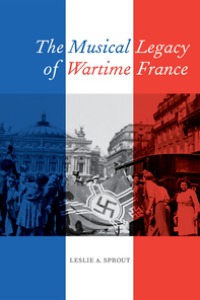
Liknande böcker
French Romantic Ballets : Jean-Madeleine Schneitzhoeffer, La Sylphide Adolphe-Charles Adam, Giselle and Le Corsaire
Bok av Edited and
This collection presents music from three of the most important scores of the Golden Age of ballet in Paris from 1830-1870. The Romantic ballet had been inaugurated by Meyerbeer's opera Robert le Diable (21 November 1831) with its ghostly Ballet of the Nuns, risen from their graves and dancing in the moonlight, led by their spectral Abbess; a role created by Marie Taglioni (1804-1884) to her father's choreography. La Sylphide (1832), inspired by this situation, was the first fully fledged Romantic ballet. Its graceful and atmospheric score was written by the first violinist at the Opera, Jean Schneitzhoeffer. The story, devised by the great tenor Adolphe Nourrit, similarly introduces spirits and elemental beings, which dominated ballet scenarios for the following decades. Filippo Taglioni's creation provided the fullest realization of the Romantic ideal, especially in the leading character of the story, and its perfect incarnation in the original interpreter, Marie Taglioni, whose stage personality seemed to be made for the part of the Sylphide. The ballet became the source of theatrically romantic fantasies centred around the hopeless and fatal love between a human being and a supernatural creature. It was performed in Paris until 1860, when the work was abandoned. Only in the late 20th century was Taglioni's original version revived in a literal reconstruction by Pierre Lacotte at the Paris Opera on 7 June 1972.Giselle is a central work in the ballet repertory all over the world. It is regarded as the absolute masterpiece of Romantic dance theatre; a wonderful synthesis of style, technique, and dramatic feeling, with an exceptional score. The ballet was devised in 1841 as a result of the collaboration of some of the major talents in literature, choreography and music in the Paris of the time. The author, critic and poet Theophile Gautier, overwhelmed by the art of the ballerina Carlotta Grisi (1819-1899), discovered what he felt would be the perfect theme for her while reading a translation of Heinrich Heine's book on German legend and folklore, D'Allemagne. Here he found the legend of the wilis-maidens who die before their wedding day and who come out of their graves at night in bridal dress to dance until dawn. Should any man be caught in the wood while the wilis are about their rituals, he is doomed to dance on and on until he drops dead from exhaustion. The choreography was created by Jean Coralli and Jules Perrot. The first act is on a realistic level, with an evocation of a medieval rusticity and emotional-sentimental intrigue, while the second act conjures up the supernatural, an ethereal world of magic symbolism. Both public and the critics greeted the work as a triumph. The score was praised for its "e;elegance, the freshness and clarity of the melodies, the vigour and novelty of the harmonic combinations, and the vivacity that pervades the musical texture from start to finish"e;. The ballet has come down the years in a more-or-less unbroken tradition. Perrot emphasized his own special creative imprint in the productions he supervised in London (1842) and St Petersburg (1856). In Russia he collaborated with Marius Petipa who made his own reconstruction of the ballet in 1884. This version became the model for all later revivals in Russia, as well as for Mikhail Fokine's production for the Ballet Russes in Paris (1910).Byron's famous narrative poem The Corsair inspired several ballets, with Joseph Mazilier's proving the most important (1856). Jules-Henri Vernoy de Saint-Georges's scenario was of a superior quality. Mazilier was maitre de ballet at the Paris Opera between 1853 and 1859, the years of his fullest creativity. The solo parts were infused with an intense dramatic expressiveness, and there was a splendid...







